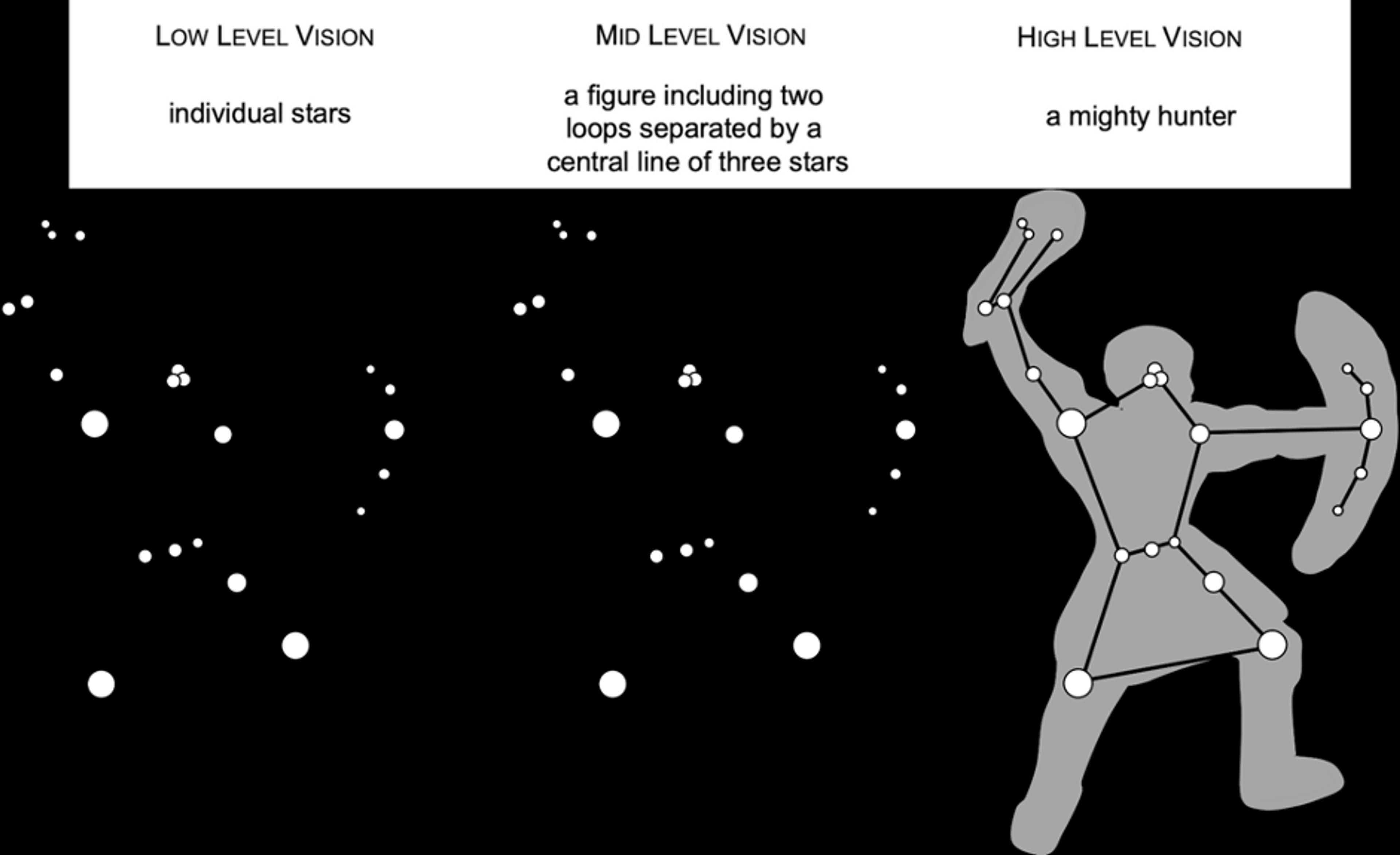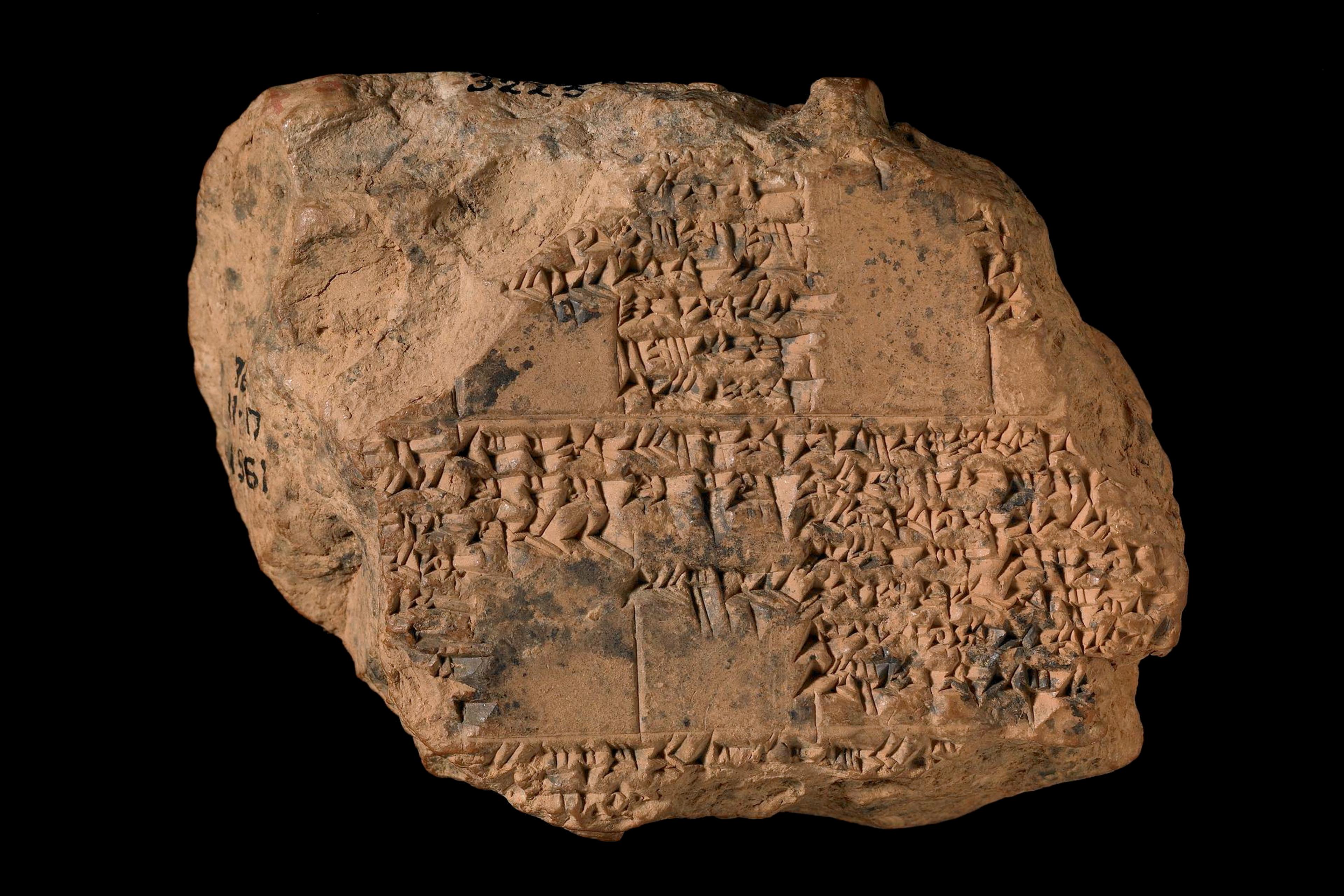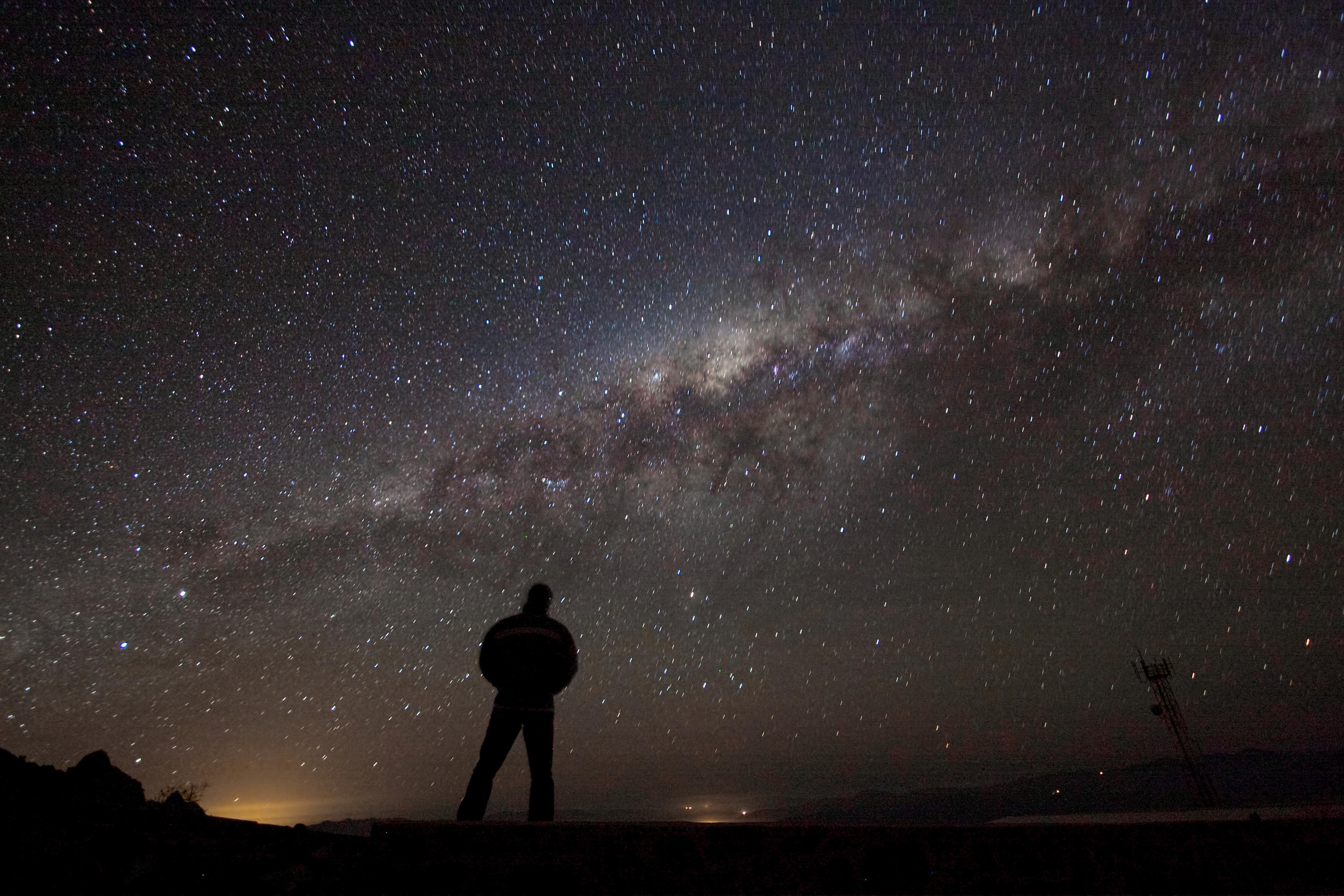The human visual system finds patterns in just about everything, instantaneously translating the light absorbed by the eyes into a recognisable representation of the outside world. This process is so powerful that it often results in the perception of faces and figures whose appearance is accidental: a rabbit in a random array of dots, or your preferred religious superstar on a piece of toast.
One of the most fascinating products of this pattern-finding capacity is the grouping of stars into constellations. These patterns have been perceived all over the world and across time, dating back at least 17,000 years. Our celestial groupings form familiar and sometimes wildly imaginative shapes – animals, objects, people, gods, mythical creatures – and each constellation comes with a story about its origin, what it means and how it is linked to other constellations. These constellations and their narratives helped ancient cultures thrive in the most inhospitable environments, and their use by those cultures reveals an incredibly deep and detailed knowledge of the relationship between Earth and the stars.
To understand how a practice such as this one came about, we need to start with how humans see the world. Research is illuminating how fundamental qualities of visual processing, likely shared by people everywhere, can help explain the emergence of a perceptual phenomenon that is both timeless and widespread.
Visual processing, roughly speaking, involves three stages: low-level, mid-level and high-level vision. For example, imagine you see a sign with the design shown in the following figure. The final product of what you see is based on how your brain combines the three stages of processing.

Low-level vision involves extracting basic components of the scene, such as fragments of edges and corners. Mid-level vision involves grouping these components to form contours and surfaces. High-level vision involves recognising the objects contained in the image and giving the figure a meaningful interpretation. In most cases, this sequence of stages produces an interpretation that accurately reflects the objects present in the scene. In other words, the things that we see normally correspond to things that are actually there. In this example, the basic shape forms a drawing of a car. The red line passing through it tells us that it is not allowed, so we infer that cars are not allowed in that location. We conclude that this is a no-parking sign based on our knowledge and personal experience.
When looking to the stars, what we typically see are patterns of things that are not actually there. The stars were not put in the sky with the purpose of forming a particular shape. They are objects orbiting the middle of our galaxy that are visible on the perceived dome of the night sky. Yet we mentally connect these independent points of light to form familiar shapes and give them meaning and purpose. Consider how this process works for a given constellation. Seeing stars as individual points of light corresponds to low-level vision. Mid-level vision forms these points of light into patterns. High-level vision associates these patterns with meaningful objects and characters, to which we give names and attribute stories.

The visual alignment of the stars we see in a constellation is coincidental. In fact, the three stars in the middle of the constellation of Orion are relatively far from one other – Alnilam is many light years farther from Earth than are Alnitak or Mintaka. While we see them as three distinct stars (low-level vision), their alignment from the vantage point of Earth means that we also group them together (mid-level vision), as if they were fragments of a real edge or border, the one that forms Orion’s belt.
Importantly, the fundamental low-level and mid-level visual processes are largely invariant across individuals and cultures. This means that there tend to be significant similarities in how people group stars into constellations. The various stars comprising Orion are conspicuous, forming what resemble the features of a person, and stars with notable colours, such as red Betelgeuse or blue Rigel, seem to mark out important attributes. Because these stars form such a unique and distinctive pattern, human brains tend to notice it, and they end up making similar connections guided by mid-level vision.
Having recognised many of the same star groupings based on these shared visual processes, people across the world have also attributed similar meanings to many of them (high-level vision). Orion has been perceived as a man – often a warrior or a hunter – in many cultures, from Australia and Egypt to Mexico and China, including ancient cultures that existed in isolation from one another for centuries. Given this long cultural separation and how old these interpretations are, the similarities between them are unlikely to be due simply to intercultural sharing.
In a recent study, we analysed various constellations recognised by people in 27 cultures, both ancient and contemporary. We used the data to compile a list of constellations that recur across cultures, and found that the list included well-known examples such as Orion as well as groupings such as Delphinus and the head of Aries. We also implemented a simple computational model that groups stars on the basis of proximity and brightness – two properties known to play an important role in mid-level vision. The model suggested that these properties alone are enough to account for many of the convergences in constellations across cultures. In short, the stars in Orion are probably grouped by people across the world largely because they are relatively bright and appear to be relatively close to each other. The same principles seem to help explain why groupings such as the Big Dipper, the Southern Cross and the Pleiades are found across cultures.
While shared perceptual principles guide the description of the night sky, culture has a considerable influence when it comes to the specific details – especially the naming of constellations and the attribution of narratives to them, which are often strongly tied to the natural environment of the people concerned. Indeed, within some cultures, specific individuals are charged with the job of closely observing the stars and passing down their knowledge orally. For example, in the Torres Strait, between Australia’s Cape York and Papua New Guinea, a Zugubau Mabaig (‘star man’) goes through years of training and initiation as a traditional astronomer. This role of individual expertise is likely where the cultural variation in describing even the most obvious of asterisms arises. While people in many cultures perceive Orion as a man, there are differences in the names used and in the stories of how he got to be in the sky and what he means.
The common themes and variations in how the stars are described also reflect the relationships between constellations and their diurnal movement across the sky throughout the night. The Pleiades star cluster is often seen as a group of girls or women, commonly referred to as the Seven Sisters. Orion appears to be pursuing the Pleiades as the stars move from east to west each night, with the sisters in front and the man in tow. The distinctive V-shaped Hyades star cluster, which lies between Orion and the Pleiades, is often perceived as a protector of the sisters, warding off the advances of Orion. Cultural narratives from across the globe reflect this dynamic, whether it is Taurus the bull protecting the Pleiades from the advances of Orion in traditions of ancient Greece, or Kambugudha protecting her younger Yugarilya sisters from the advances of Nyeeruna the hunter in Aboriginal traditions of Australia’s Great Victoria Desert.
Why is it that cultures around the world have created narratives about these commonly recognised shapes? In ancient times, people developed stories about identifiable features of the night sky to help them live and thrive in their environment. Such stories can contain information about the behaviour of plants and animals. They might also contain a moral lesson, which forms the foundation of traditional law. This is all passed down orally through storytelling, song, dance and ceremony. In this manner, constellations have served as a shared memory space.
A narrative from the eastern Torres Strait demonstrates this well. The story of Tagai describes a spiritual man, leader and skilled warrior who captained a vessel carrying his first mate Kareg and a crew of 12. During the start of a long expedition, the crew consumed all their own water and food rations, as well as Tagai’s. When he discovered their careless and selfish act, he killed them in a fit of rage and they all ascended into the sky as constellations. The crew formed two groups of six stars: Usiam (the Pleiades) and Seg (the stars of Orion’s belt and scabbard). Tagai and Kareg ascended to opposite sides of the sky.
When Tagai’s left hand (the Southern Cross) sets just after dusk in October, people know that turtles are beginning to lay their eggs. In late November, when Tagai and Kareg set at dusk, they appear to dive into the sea, splashing water into the sky that falls as the first rains of the Koki (monsoon season). This is when Islanders begin planting banana and yam. Tagai is a focal point of Torres Strait Islander culture, spirituality and identity.
Constellations have also been used for orientation and navigation, and this practice continues in the present day across many cultures. For example, the ‘arrow’ of Orion’s belt and scabbard stars can be used to point out due north. People in Australasian and Pacific cultures use these stars to guide their canoes, as do many seafarers circumnavigating the globe – despite their technologically well-equipped vessels. On land, constellation stories encode information about individual stars that are reflected in features of the local environment through a star map. Stars serve as waypoints on a journey – pointing out important sources for food, water and medicine – and the ‘lines’ connecting them signify pathways across the landscape. Euahlayi Aboriginal people in northern New South Wales use stars in the constellations of Scorpius and Ara to map out journeys extending well over 600 kilometres.
Even in an age of automation and advanced technology, there are many examples of people using stars for navigation, both on Earth and in space. NASA has recently been examining the use of the remarkably predictable flicker of pulsars for navigation across the cosmos.
While constellations and the stories attached to them have obvious artistic and spiritual significance, they also represent an elegant and effective solution to the problem of understanding complex physical environments. Even as scientific knowledge has grown and people have become more interconnected, the knowledge embodied in the night sky has retained its significance. The universal nature of the experience of constellations, driven by the common mechanisms of detection, is a testament to its importance in our shared human narrative.








